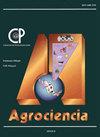基于水文和自回归模型的输沙量估算
IF 0.5
4区 农林科学
Q4 AGRICULTURE, MULTIDISCIPLINARY
引用次数: 0
摘要
水文建模可以模拟径流和泥沙过程,这些过程应用于综合流域管理、土壤和水养分等方面。然而,这些模型需要大量的输入数据。泥沙数据往往缺乏数量和质量,这导致水文模型的不确定性。本研究的目的是利用自回归综合移动平均模型(ARIMA)和水土评估工具(SWAT)模型,提出一种基于墨西哥圣路易斯Potosí Santa Cruz de Aquismón子盆地沉积物时间序列的替代方法。SWAT模型使用来自26 241 (Ballesmi)站的国家地表水数据库(BANDAS)的实测流量进行了校准和验证。采用Nash-Sutcliffe系数(NSE)、百分比偏差(PBIAS)和均方根误差(RMSE)评估模型校准和验证性能。SWAT模型契合度被评为非常好。将水文模型结果与ARIMA模型1985年6月、9月和11月的日沉积物估算值进行了比较。平均绝对百分误差(MAPE)分别为0.571、0.168和0.029。结果表明,在信息有限的短时间序列中,利用ARIMA模型进行泥沙估算是有用的,因为它可以弥补缺失的数据序列或短期估算。本文章由计算机程序翻译,如有差异,请以英文原文为准。
SEDIMENT TRANSPORT ESTIMATION FROM HYDROLOGICAL AND AUTOREGRESSIVE MODELS
Hydrologic modeling allows the simulation of runoff and sediment processes, which are applied in integrated watershed management, soil and water nutrients, among others. However, these models require considerable amounts of input data. Sediment data is often lacking in quantity and quality, which leads to uncertainty in hydrological models. The objective of the present study was to propose a methodological alternative based on sediment time series in the Santa Cruz de Aquismón sub-basin, San Luis Potosí, Mexico, by means of autoregressive integrated moving average models (ARIMA) and the Soil and Water Assessment Tool (SWAT) model. The SWAT model was calibrated and validated with measured flows from the National Surface Water Data Bank (BANDAS) of station 26 241 (Ballesmi). Model calibration and validation performance was assessed with Nash-Sutcliffe Coefficient (NSE), percent bias (PBIAS), and the root mean squared error (RMSE). The SWAT model fit was rated as very good. The hydrologic model results were compared to the daily sediment estimates from three months in 1985 (June, September, and November) obtained from ARIMA models. The mean absolute percent error (MAPE) was 0.571, 0.168, and 0.029, respectively. The results indicated that the use of the ARIMA model for sediment estimation is useful when there are short time series with limited information, since it allows the completion of missing data series or short-term estimates.
求助全文
通过发布文献求助,成功后即可免费获取论文全文。
去求助
来源期刊

Agrociencia
农林科学-农业综合
CiteScore
0.50
自引率
33.30%
发文量
51
审稿时长
18-36 weeks
期刊介绍:
AGROCIENCIA is a scientific journal created and sponsored by the Colegio de Postgraduados. Its main objective is the publication and diffusion of agricultural, animal and forestry sciences research results from mexican and foreign scientists. All contributions are peer reviewed. Starting in the year 2000, AGROCIENCIA became a bimonthly and fully bilingual journal (Spanish and English versions in the same issue). Since 2007 appears every month and a half (eight issues per year). In addition to the printed issues, the full content is available in electronic format.
 求助内容:
求助内容: 应助结果提醒方式:
应助结果提醒方式:


